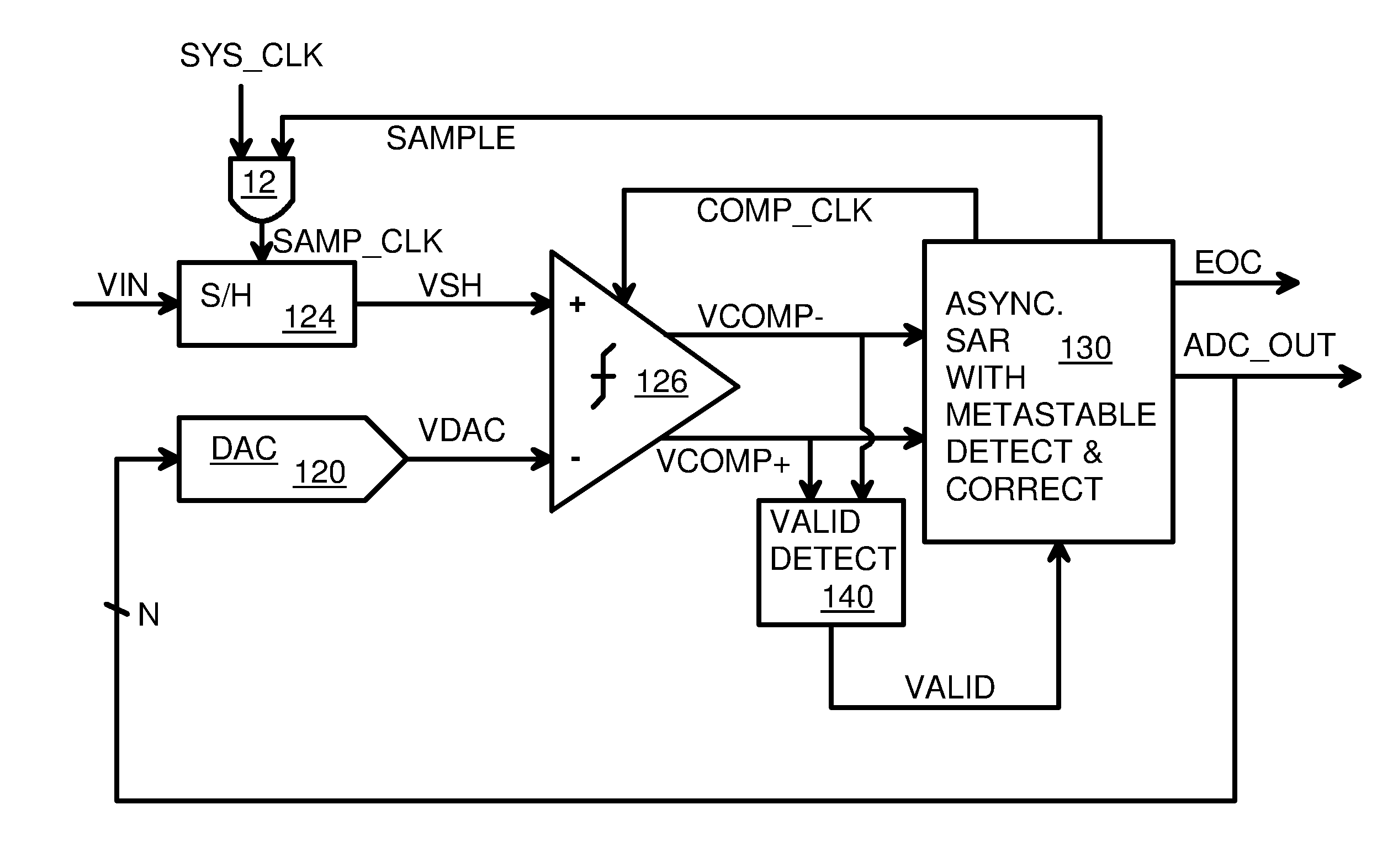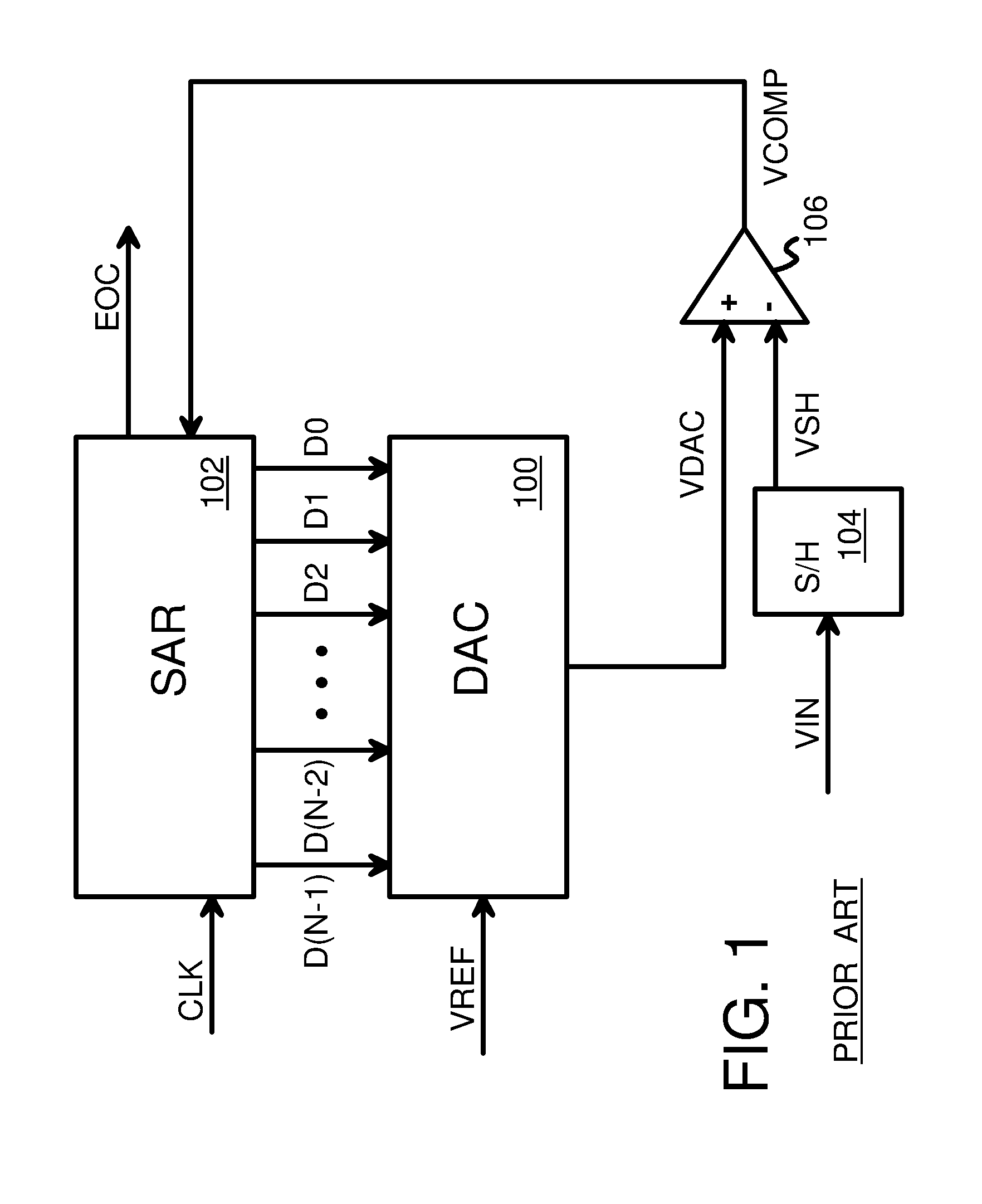Asynchronous successive-approximation-register analog-to-digital converter (SAR ADC) in synchronized system
a synchronized system and successive approximation register technology, applied in the field of analog-to-digital converters, can solve problems such as output errors, metastability problems, and metastability in synchronous and asynchronous systems
- Summary
- Abstract
- Description
- Claims
- Application Information
AI Technical Summary
Benefits of technology
Problems solved by technology
Method used
Image
Examples
Embodiment Construction
[0029]The present invention relates to an improvement in error-correcting SAR-ADCs. The following description is presented to enable one of ordinary skill in the art to make and use the invention as provided in the context of a particular application and its requirements. Various modifications to the preferred embodiment will be apparent to those with skill in the art, and the general principles defined herein may be applied to other embodiments. Therefore, the present invention is not intended to be limited to the particular embodiments shown and described, but is to be accorded the widest scope consistent with the principles and novel features herein disclosed.
[0030]FIG. 4 is a block diagram of an error-correcting SAR-ADC with metastability detection. An input voltage VIN is sampled and held by sample and hold 124 to provide sampled voltage VSH to an input to comparator 126. AND gate 12 activates the sampling clock SAMP_CLK when a next sample signal is generated and the system clo...
PUM
 Login to View More
Login to View More Abstract
Description
Claims
Application Information
 Login to View More
Login to View More - R&D
- Intellectual Property
- Life Sciences
- Materials
- Tech Scout
- Unparalleled Data Quality
- Higher Quality Content
- 60% Fewer Hallucinations
Browse by: Latest US Patents, China's latest patents, Technical Efficacy Thesaurus, Application Domain, Technology Topic, Popular Technical Reports.
© 2025 PatSnap. All rights reserved.Legal|Privacy policy|Modern Slavery Act Transparency Statement|Sitemap|About US| Contact US: help@patsnap.com



